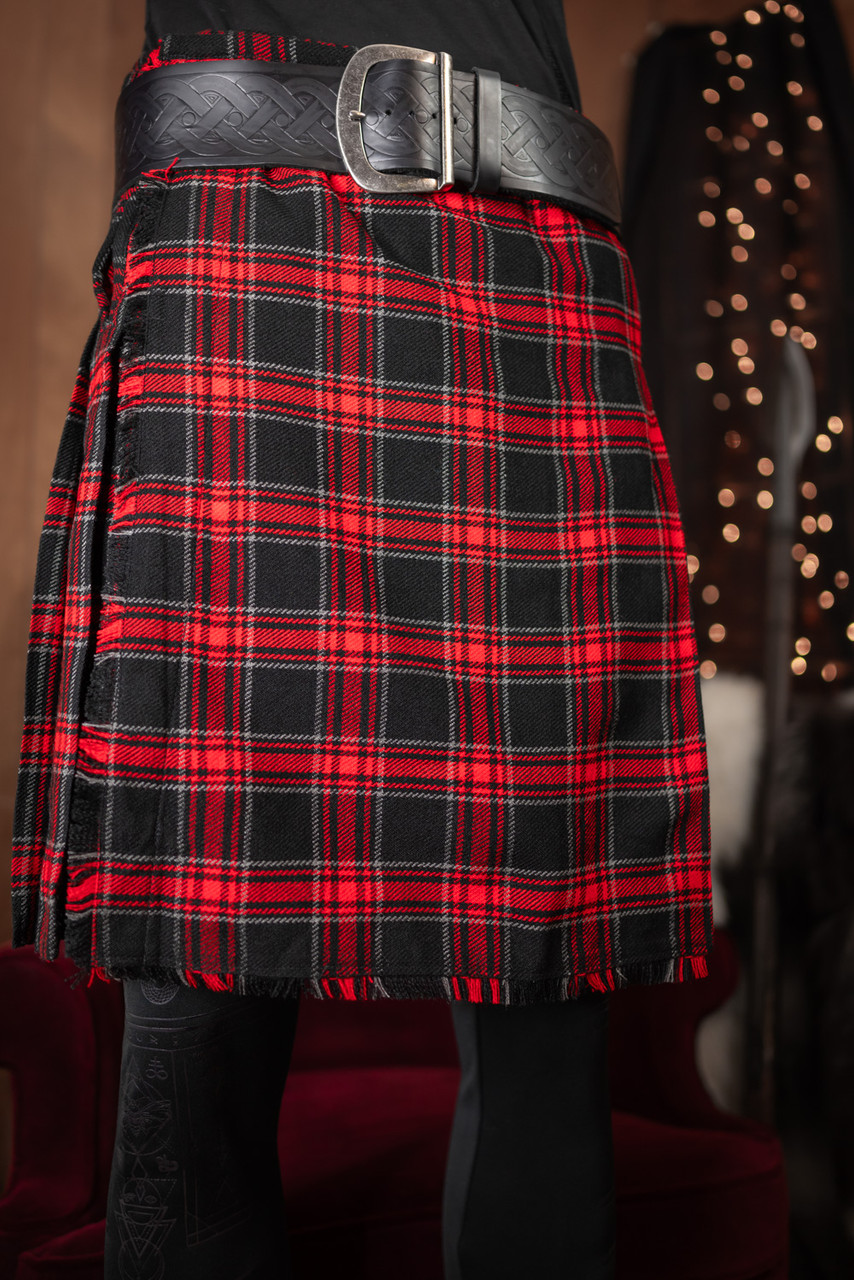The kilt, a staple of men’s Highland Dress, has to be it. Since the kilt represents his heritage and traditions, a “true Scotsman” wears it with honor and pride. Wearing it for military parades, christenings, and weddings alike, this iconic piece of Scottish apparel lives on.
However, how much do you know about the origins of the kilt? We like to think of ourselves as tartan virtuosos here at Lochcarron. As a result, we like to believe that we are knowledgeable about kilts.
As a result, we have put together a brief history of this distinctive Scottish outfit.
Its Inception
Kilts for men are widely recognized around the world as the national garment of Scotland. They have profound historical and cultural roots and are a symbol of nationalism and patriotism. People from scotland clothing kilts for men proudly wear kilts as a nod to their ancestry wherever they go. However, things weren’t always like this.
For an extended period, primarily restricted to the Highlands, the kilt was commonly regarded as the attire of barbarians. Most Scots were Lowlanders, and they considered this type of clothing to be primitive. Those who wore it were looked down upon and hated, and they were called “redshanks” in a disparaging way.
How did Things Change Over Time?
Over the ages, the kilt has evolved, just like most articles of apparel. The late 1600s saw the creation of the “great kilt,” which later evolved into the little kilt that is worn today. The kilt has a long history that dates back at least a century.
The Magnificent Kilt
The kilt originated as the great kilt (Feileadh Mòr) or belted plaid (Breacan an Fhéilidh) at the end of the 16th century. It was a long, full-length garment whose upper half could be worn over the head as a hood or as a cloak draped over the shoulder.
The belted plaid offered numerous benefits because of the Scottish Highlands’ bad weather and hazardous terrain. It dried quickly, was warm, moved freely, provided appropriate overnight blanketing, and the top half functioned as a cloak against the cold. This early style of kilt may be known to you from Mel Gibson’s critically acclaimed film Braveheart, in which Wallace, a fervent patriot and champion of Scottish liberty, proudly dons a belted plaid to demonstrate his devotion to the Scottish cause.
But since the big kilt did not exist until around 300 years after Wallace’s passing, this portrayal is wildly incorrect. Still, it provides you with a general notion of the appearance of this big piece of cloth that resembles a blanket.
The Tiny Kilt
The little kilt, also known as the walking kilt, did not emerge until the late 17th or early 18th century, and it is very similar to the knee-length tartan kilt that we are familiar with today.
While the great kilt (or belted plaid) was still worn, the tiny kilt, also known as the walking kilt (fèileadh beag), gained popularity in the Highlands and northern Lowlands by 1746. It was essentially the lower half of a great kilt.
The British Army’s Highland regiment adopted the little kilt’s pattern; the military garment then found its way into civilian wear and has continued to be well-liked ever since.
Who made the kilt first?
Rawlinson
A letter in the Edinburgh Magazine claims that Thomas Rawlinson, a Lancashire Quaker, invented the contemporary kilt, albeit this claim is not without dispute. Highlanders were employed by English ironmaster Rawlinson, a “man of genius and quick parts,” to operate in his furnaces near Inverness. His employees initially wore the large kilt. But Rawlinson thought the belted plaid was too “cumbrous and unwieldy” to be used in the production of charcoal and iron ore.
Based on economy and functionality, he created a kilt, which is the lower portion of the belted plaid, to function as a separate piece of clothing with pleats already sewed in. And so the walking kilt, or little kilt, was developed. The clansmen imitated their chief, Ian MacDonnell, who is the chief of the MacDonnells of Glengarry, and Rawlinson, who was their business partner, wore the kilt themselves.
The item, which resembled a tartan skirt, quickly gained popularity. Significantly, Rawlinson’s kilt is the first known instance of a little kilt with sewn-in pleats, a trait that sets modern kilts apart.
Prior to Rawlinson
Naturally, a lot of Scots contest the idea that the kilt was created by an Englishman. It is possible that the kilt was in use before to Rawlinson’s time, based on certain evidence. Kenneth Sutherland, 3rd Lord Duffus, for instance, has a portrait that seems to indicate the walking kilt was used earlier. Though various historians dispute on the origins of the contemporary kilt, there are disagreements within the historiographical community regarding this notion.
Renowned Scottish historian Michael Fry refuted Lord Dacre’s assertions regarding the kilt, stating that they “prove absolutely nothing.” Tartan was worn in the Middle Ages, according to Fry, who also called Lord Dacre “not a very reliable guide to Scottish history.”
Conclusion
The stories of who created Scotland’s distinctive symbol vary, as with any historical tale. Which of the following accounts seems most likely? In any case, the discussion about this divisive and deeply patriotic subject goes on.


